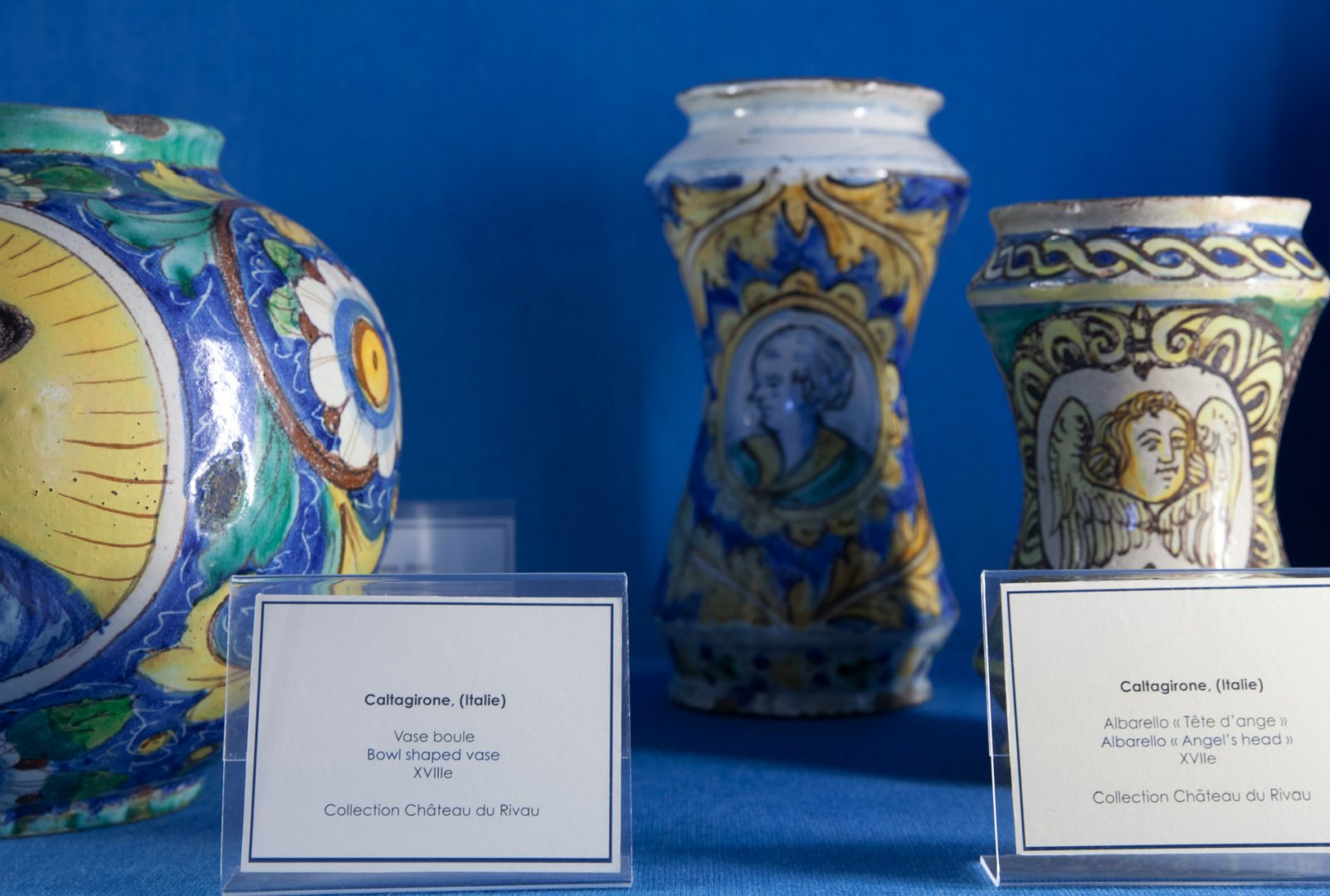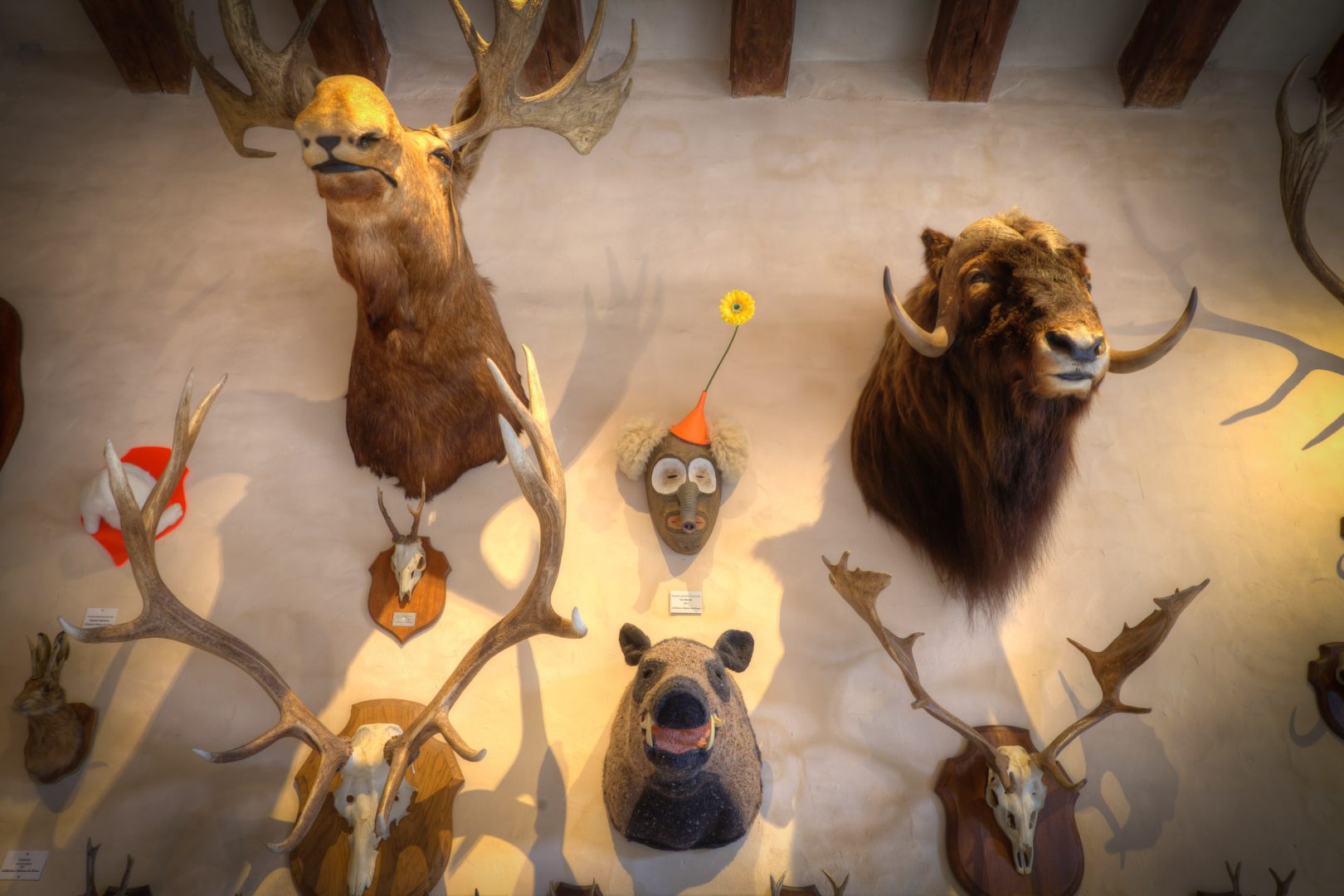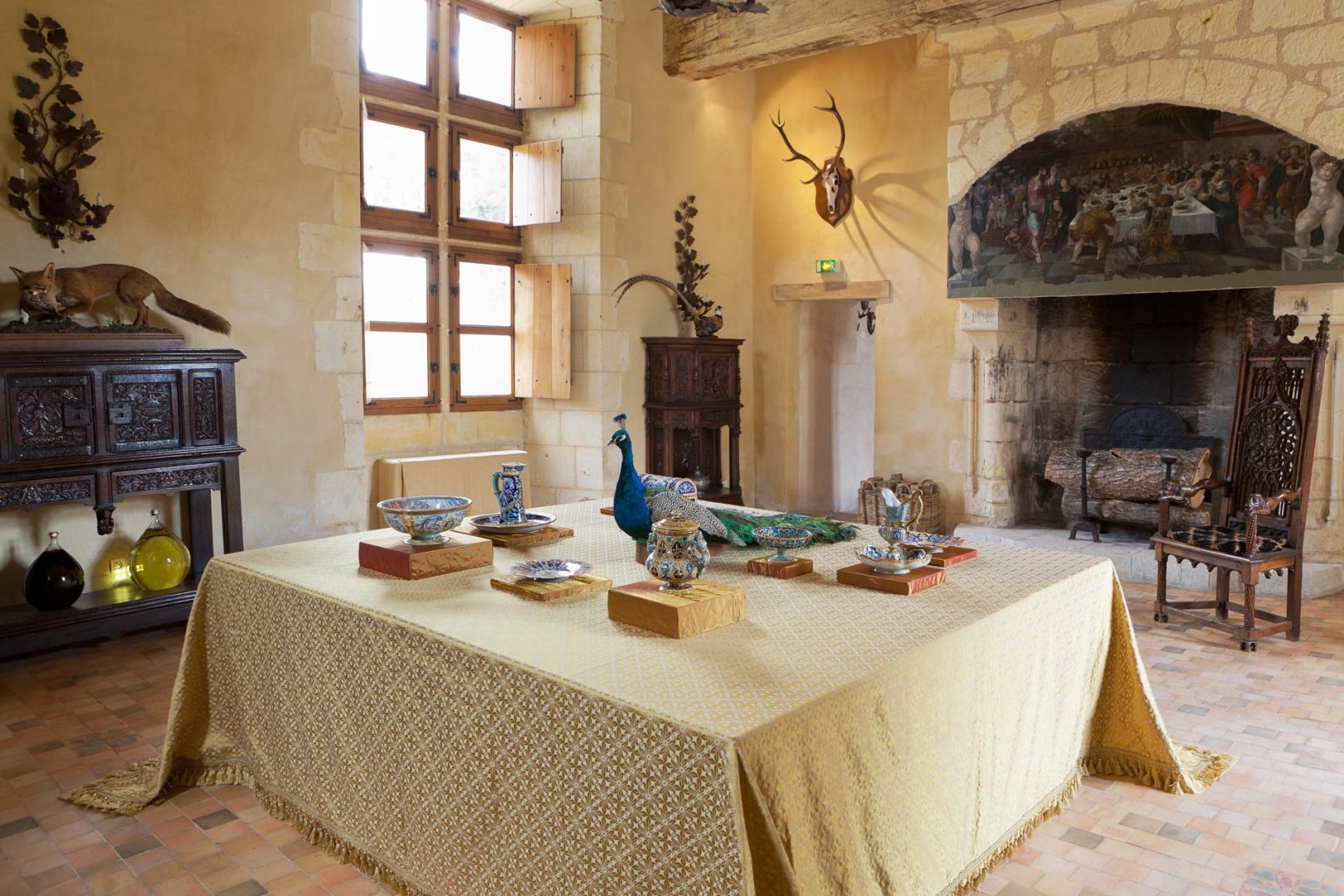Art
Castle Furniture
ART, OBJECTS AND ANCIENT FURNITURES OF THE CASTLE
A real cabinet of curiosities
One of the great castle of the Loire Valley, Le Château du Rivau has been passionately restored by its current owners, combining period furniture with works of art by renowned contemporary artists. The large rooms, where the spirit of Renaissance curiosities lives on, exude the atmosphere of a grand, lived-in stately home.
Ancient paintings
In the Beauvau room, dedicated to the builders of Le Château du Rivau, the illustrious Beauvau line, we are greeted by the portrait of the last Lord of Beauvau, Jacques III, who owned the estate until 1697. Next to it, the portrait of his nephew René-François de Beauvau du Rivau, by Hyacinthe Rigaud, portraitist to the King, testifies to the high standing of this lineage.
The art of faience
During the Renaissance, earthenware exerted a fascination that reflected the humanist preoccupations of the time. In the cabinet, Deruta’s Italian earthenware is recognisable by its rich floral decorations. Caltagirone’s albarelli illustrate the istoriato movement, in which the arts of fire tell a story. The art of earthenware developed in France thanks to the Franco-Italian princes who settled in Nevers – the Gonzagas, dukes of Mantua and Nevers – and through the Genoese potters who settled in Lyon. The Rivau collection includes a seventeenth-century albarello from Lyon with stylised leaf garlands, as well as two pots from Nevers and two lamps from Orléans depicting Joan and Charles VII.
The rare, large urn from Blois is a reminder of the role played by the Ulysse family, earthenware makers in the Loire Valley in the 19th century. Their workshops were founded by descendants of Italian potters who had settled in Lyon. The first ceramics workshop in Blois was set up by Ulysse Besnard in 1862. Émile Balon, Gaston Bruneau, Josaphat Tortat and Adrien Thibault continued in this decorative art. The Château du Rivau collection includes pieces from all these workshops, demonstrating the richness of Blois ceramics.
The school of Palissé enamels, from Tours, is also represented in the Rivau collections.

Offering dishes
Brass dishes with repoussé decoration, produced in Germany, in Nuremberg in particular, were used as light reflectors or decorative elements in the 16th century.
Furniture
Medieval chests with napkin pleats, Renaissance chests carved with mythological scenes, Gothic credenzas, dressers, Bargueno, a large table: all the authentic furniture in the Rivau collection bears witness to the art of living in the 15th and 16th centuries, when people travelled from castle to castle with their furniture.
The Hunting Art Collection
The room in the main dwelling is filled with trophies from the hunting collection, family heirlooms. Paradoxically, it is respect for animals that has always led man to harvest wildlife in order to preserve species. Under the Ancien Régime, only the King and the great lords had the privilege of hunting, as they were entitled to bear arms. During the French Revolution, hunting privileges were abolished. Today, the Office National de la Chasse is responsible for safeguarding and sustainably managing wildlife and its habitat. Quite naturally, hunters became the protectors of the forests and fields, because game was ravaging the crops. These family memories are also a reminder that hunting was the main pastime of the great lords.

The frescoes
In the 16th century, the entire castle was frescoed. Unfortunately, these frescoes were obscured at the beginning of the 20th century. During the restoration of the castle, the oil fresco on the mantelpiece of the fireplace in the banqueting hall, which had been recently painted over, was brought to light, as was the a fresco on the ceiling. The two painting techniques in vogue during the Renaissance intersect here. A fresco, the technique of the Italian masters, painted on fresh plaster that was still damp, allowed the pigments to penetrate the mass and the colours to resist the ravages of time. Oil painting, on the other hand, was discovered by the great masters of Northern Europe in the 15th century.
On the mantelpiece, Balthazar’s Feast illustrates the biblical scene inspired by the story in the Book of Daniel. It shows King Balthazar, son of King Nebuchadnezzar, seated and overwhelmed by the mysterious letters on the wall : Mene tekel. The Book of Daniel tells us that, faced with the ignorance of the king and his court to decipher the message, Daniel, a descendant of the Hebrews brought back to Babylon by Nebuchadnezzar, is sent to decipher the message : God has numbered the days of your kingdom and has put an end to them, announces the one designated as the prophet Daniel.
The fresco on the ceiling, painted by an Italian master at the same time, depicts the four seasons of the vineyard and shows that this room, where the two European schools of painting met, was one of the most important.

